Growing evergreen plants in pots is one of the most unglamorous but truly useful things you can do to improve the design of your garden. It isn’t hard and colorful – more like bonsai without all the tedious snipping. But what you get for your efforts is lots of interesting textures, colors, and shapes to round out your container garden collections and other garden areas – all year round.
If you have followed me for a while, you know I prefer a container garden style that is almost never thriller-filler-spiller and almost always a one-plant-one-pot collection style of container garden design. I find it more satisfying to be able to rearrange the plants whenever I want (and as needed). Also, I can choose a pot and the soil mix and maintenance for each plant so that they can be their most beautiful.
Evergreen Plants in Pots – Design Considerations
An evergreen plant growing in a movable pot really is a universal problem solver in so many ways that you might not expect.
In a collection, they are the backbone – the plant that you never have to worry about deadheading, going out of bloom or needing a lot of extra care.
They can fill in a hole (I’ve been known to use houseplants and evergreen pots in beds to fill in while something else is taking root), and they provide something to enjoy and look at when all the perennials are dormant.
Since they are evergreens – these are the pots I will have not just in summer, but they are the anchor of a year-round container collection that carries my garden through every season.
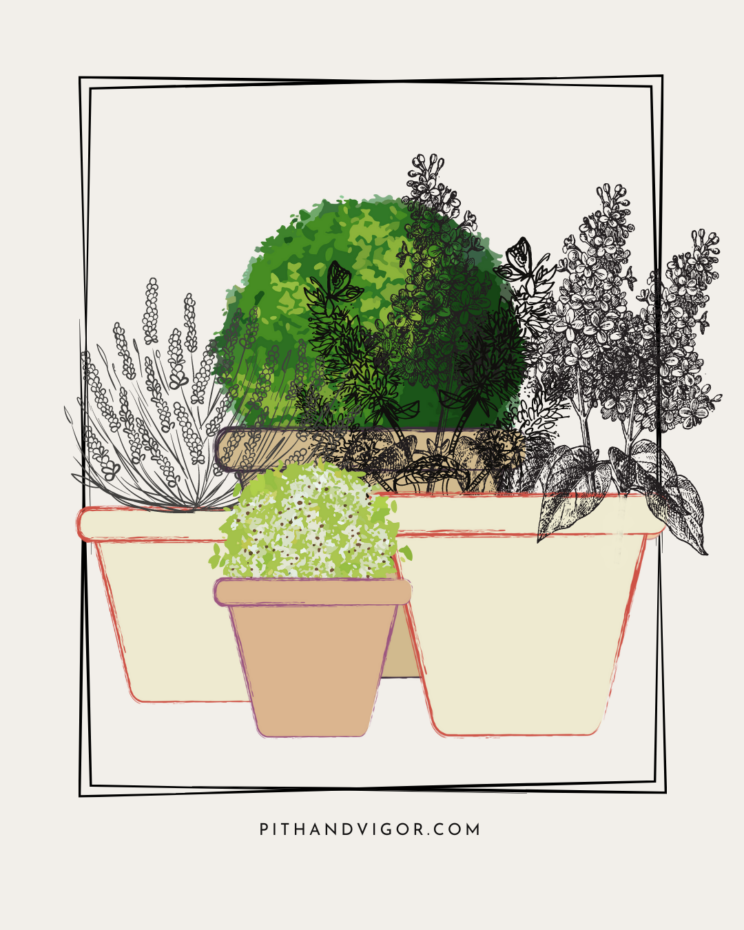
Join The Collected Container Garden Course before Spring planting!
We have a FUN NEW Year of designing collected CONTAINER GARDENS ahead (Ditch the Thriller, Filler, Spiller chaos!)🪴.
Special considerations for growing evergreens in pots:
Anything you grow in a pot year-round will not be as hardy as if grown in the ground.
Hardiness calculations assume that the roots of a plant are insulated and kept at a relatively constant temperature for that zone. If the roots are above ground – in a pot – they will not have the same insulation and are prone to more cold damage.
You can do a few things to avoid losing potted plants to winter kill.
Whatever your zone is – subtract one and then plant for that zone. So, for example – if you live in Zone 5 – plant things that are hardy to at least in Zone 4. This will help accommodate for that extra coldness. Sometimes, you might need to subtract two (so, in zone 5, year-round container plants should be hardy to zone 3).
You can also improve winter hardiness for potted plants by moving them into a garage or up against the side of your home. Anything to give them the benefit of a more moderated root temperature will help.
2. Plant sizes of container-grown plants will be smaller.
When you grow plants in pots, they can only access the nutrients available in the pot. Since they cannot stretch and reach for what they need in the soil, they will only grow to the size their limited root structure will allow. Some plants adapt to contained roots, and others will decline as they become more root-bound. As the years pass, you may find that some plants will benefit from being given more space.
3. The material of your container will make a big difference.
Plants that want good drainage and do not demand moist soil will likely do better in a porous container (like terracotta). A plant that needs more consistent moisture will likely do better in a container that drains less freely and does not dry out as fast (like plastic, wood, cement, composite, etc).

1. Dwarf Globe Blue Spruce Tree
- Latin Name: Picea pungens ‘Globosa’
- Hardiness Zones: 2-7
- Container Growing: This dwarf spruce thrives in well-draining soil with regular watering. Ensuring the pot is large enough to accommodate its root ball is important – This is a plant for a pot that is at least 16-18″ in diameter and probably more. Full sun is essential for healthy growth. Growing it in a container will allow you to rotate it occasionally, which will help it retain its perfect shape and color on all sides.
Dwarf Globe Blue Spruce (Picea pungens ‘Globosa’) is a bit of an investment plant. These are slow growers, and the cost reflects the investment in time that growers have made before you buy it. Picea pungens have been found to live for as much as 600 years and can easily live in your garden in a container for decades.
You don’t need a bunch of them to make an impact – one or two could be all you need to break up a collection with too much green and to give some height and shape.
The Blue needles are as universally easy to pair with any bloom color of flowering plant but I particularly like them with soft pinks and/or other jewel-toned (burgundy, orange, dark purple, dark green) garden color schemes.
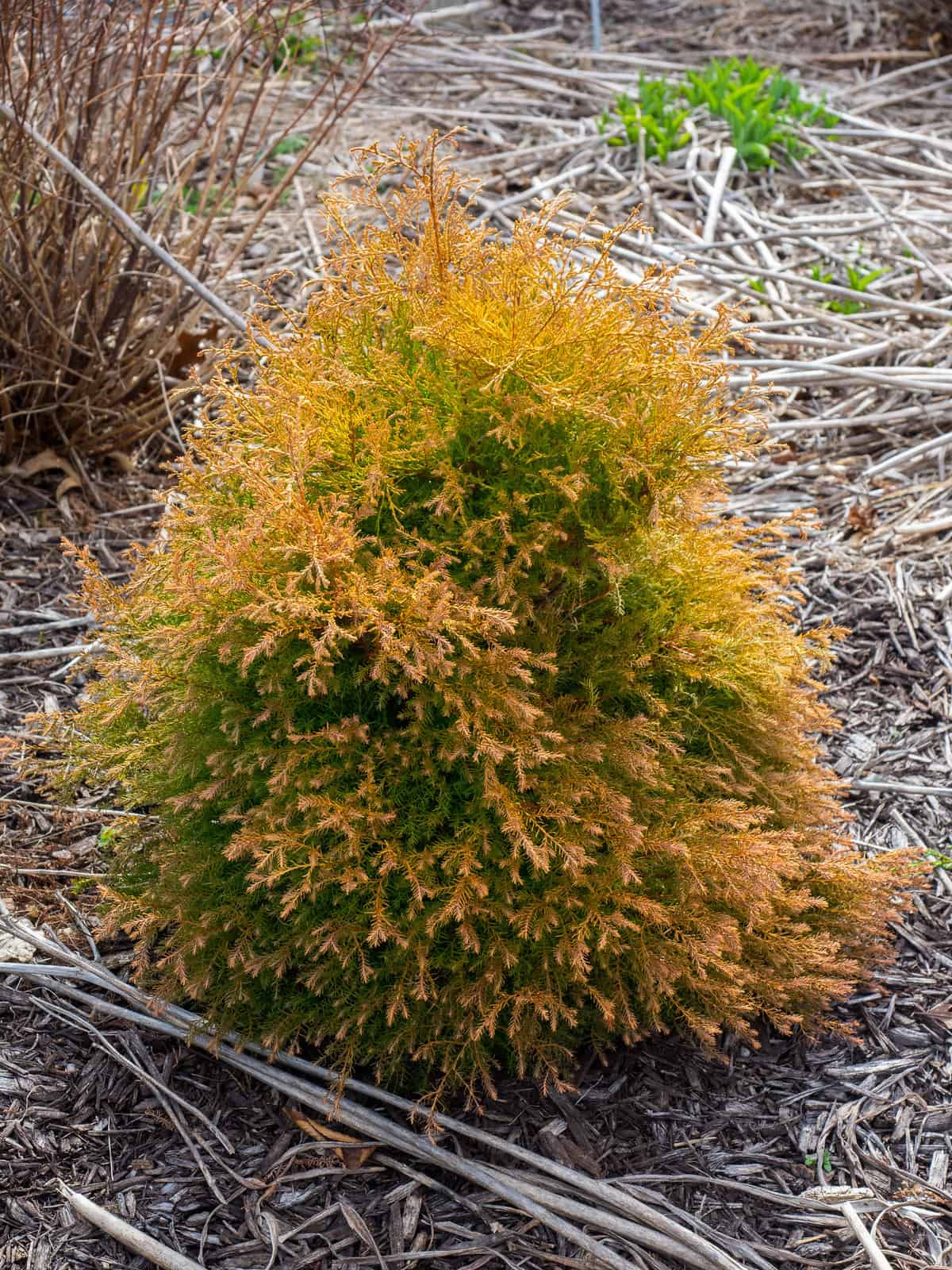
2. Fire Chief™ Thuja Shrub
- Latin Name: Thuja occidentalis ‘Congabe’
- Hardiness Zones: 5-8
- Container Growing: Prefers moist, well-drained soil and partial to full sun. Its compact size makes it ideal for containers. Regular pruning helps maintain shape and promotes dense foliage.
The most unexpectedly colorful of the suggestions in this list – The Fire Chief™ Thuja is renowned for its vibrant foliage that changes color with the seasons. It displays bright golden tips during spring, which transform into a rich orange-red in the fall (with a swipe of pinkishness in between). The foliage is fine and soft, forming a dense, globe-shaped mound that is great for a container.
It is a dwarf cultivar, reaching about 2 to 4 feet in height and width at maturity but will remain on the smaller side if grown in a container.
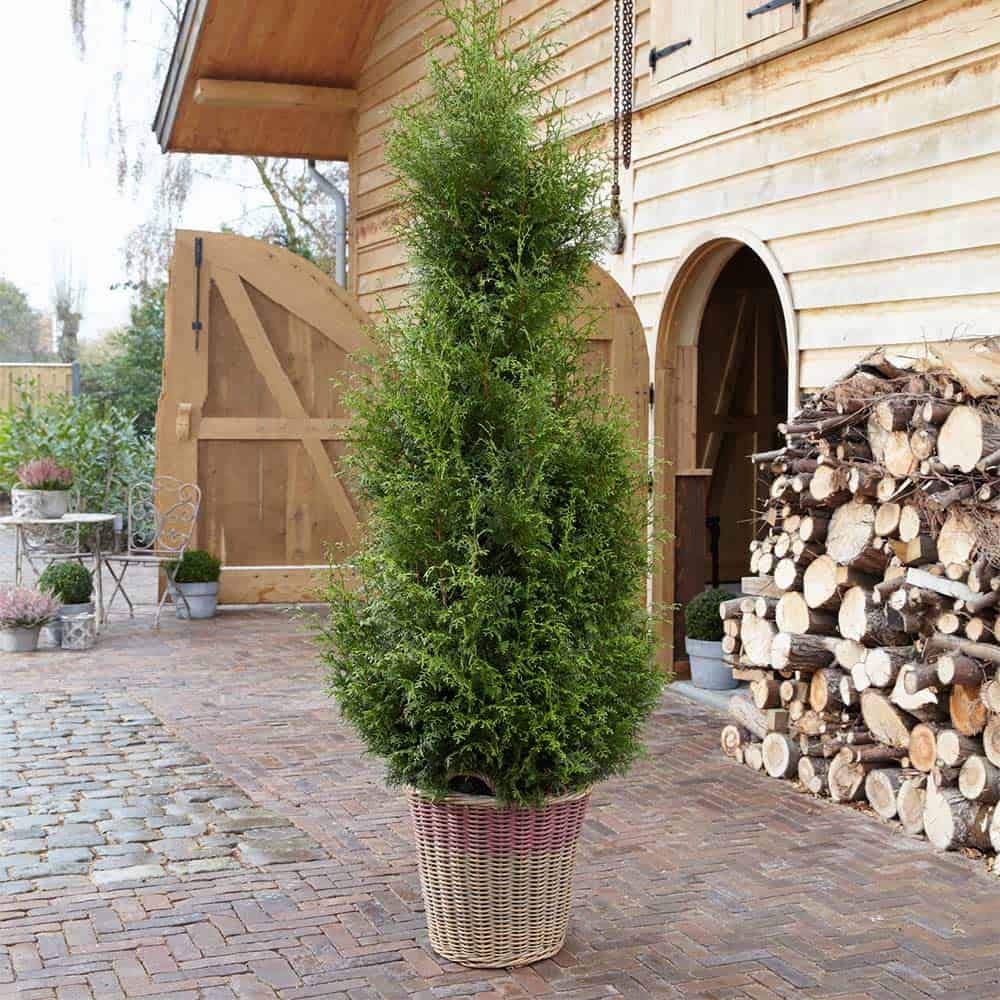
3. Sugar and Spice Thuja (Arborvitea)
- Latin Name: Thuja occidentalis ‘Sugar and Spice’
- Hardiness Zones: 3-7
- Container Growing: Needs well-drained soil and full to partial sun. The container size should allow for root growth (at least 18″ or more). It’s resistant to cold and maintains its color well in winter, making it a great choice for turning into holiday decorations when the time comes.
The great thing about Sugar and Spice Thuja is that it typically has one main stem (other Thuja and arborvitae often have multiple stems). This single-stem variety is particularly narrow, making it a great choice for growing in a container.
Arbovitae, in general, are popular and easy-to-find evergreen trees that are native to eastern and central Canada and much of the north-central and northeastern United States.
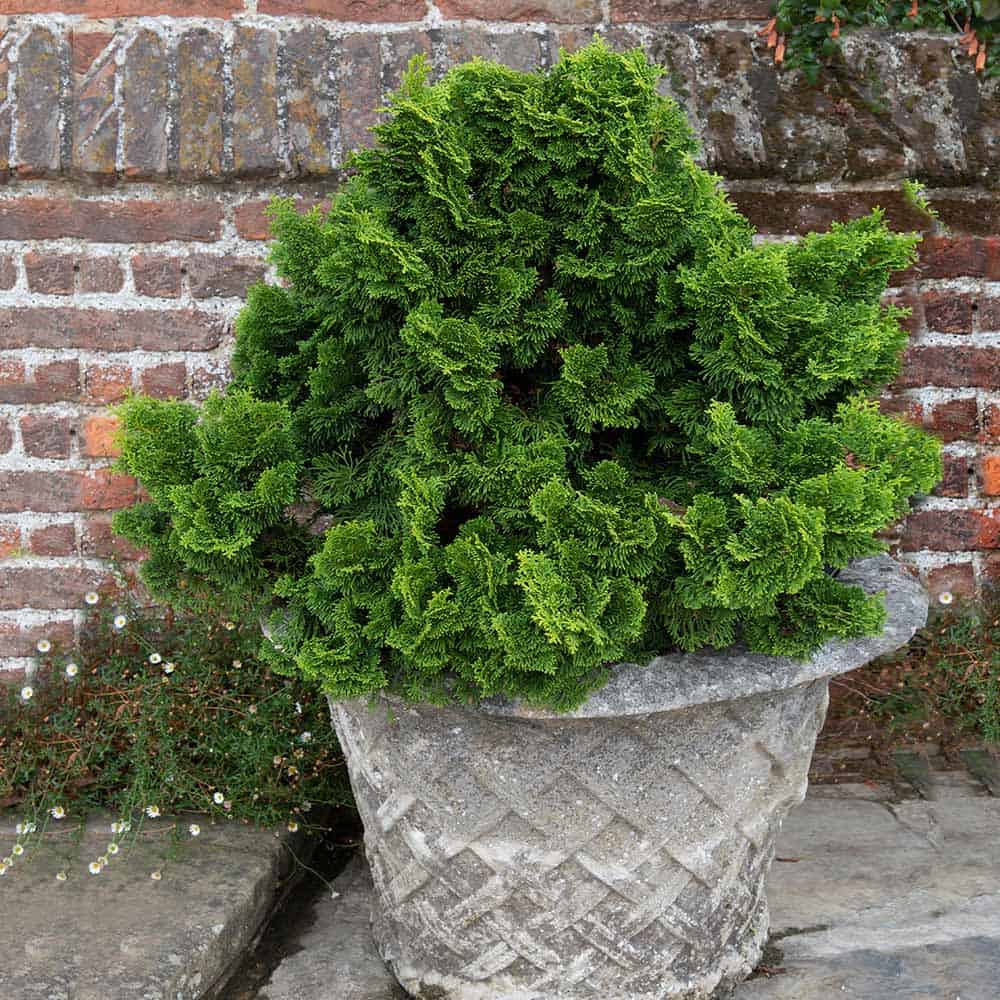
4. Dwarf Hinoki Cypress
- Latin Name: Chamaecyparis obtusa ‘Nana Gracilis’
- Hardiness Zones: 4-8
- Container Growing: Requires well-drained soil and partial to full sun. Ensure adequate moisture without overwatering. It’s slow-growing, making it suitable for long-term container planting.
Dwarf Hinoki Cypress (Chamaecyparis obtusa ‘Nana gracilis’) can be hard to find but is worth the hunt. You are unlikely to see it in big box stores or smaller nurseries.
The foliage can look velvety, and its unique texture, deep green color, and flexibility make it a great buy. It is tolerant of shade and does well in containers over the long haul (some of these other suggestions will be wanting to out grow their containers after a few years – hinoki cypress is great for long-term container growth).
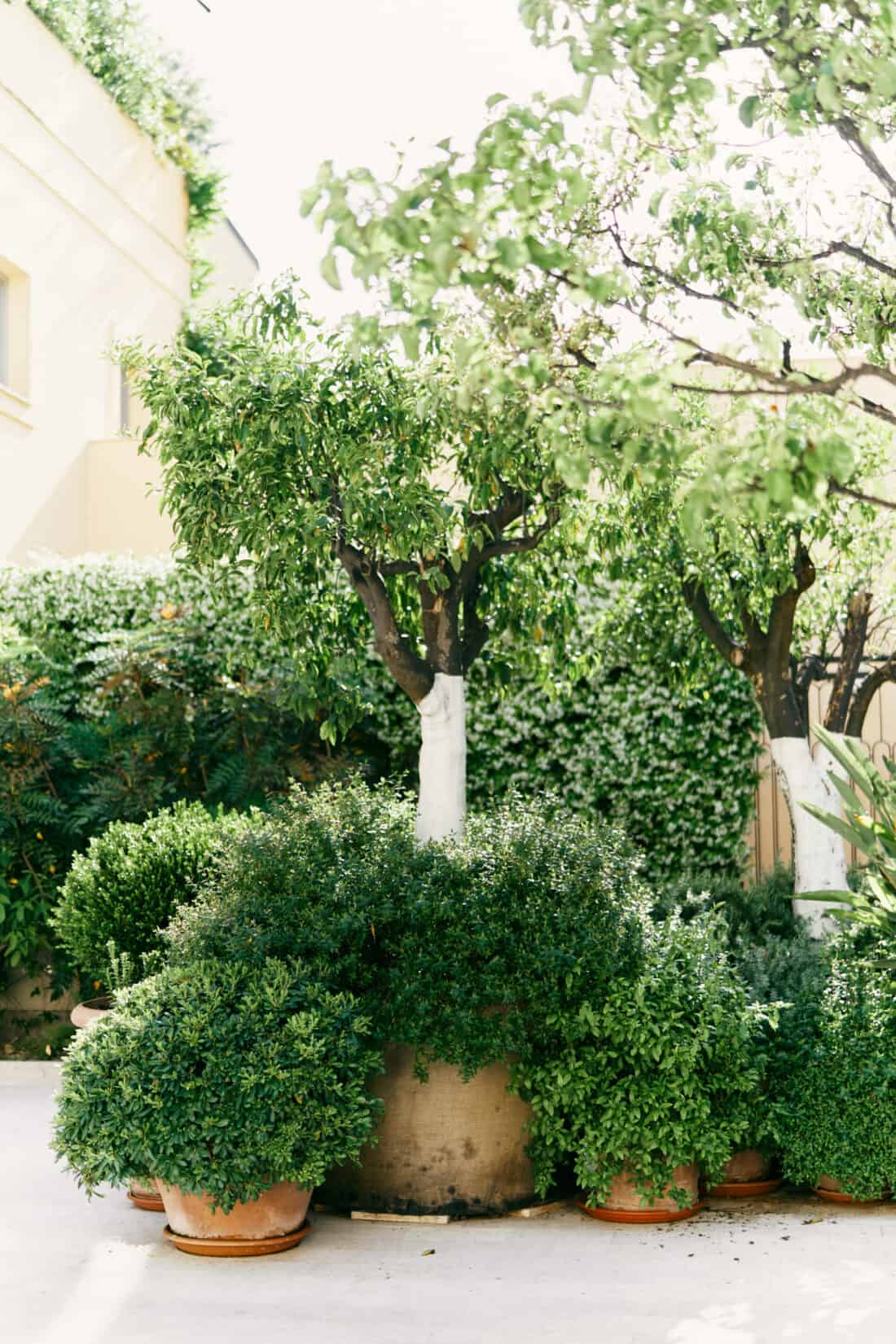
5. Green Velvet Boxwood
- Latin Name: Buxus ‘Green Velvet’
- Hardiness Zones: 4-9
- Container Growing: Prefers slightly acidic to neutral soil. It requires regular watering and partial to full sun. Its dense, rounded habit is ideal for formal container displays.
Boxwood cultivars are distinctive not just for their leaf shape, size, and color but for the overall habit of the plant. Some grow upright and pyramidal, some are more cylindrical, and some are more or less ball-shaped.
Buxus Green Velvet (green velvet Boxwood) is perfect for container growing because it naturally grows in a tight round ball. It is easy to maintain in this tidy shape and is a great addition to a container garden collection that needs some structure to contrast with other wilder plants.
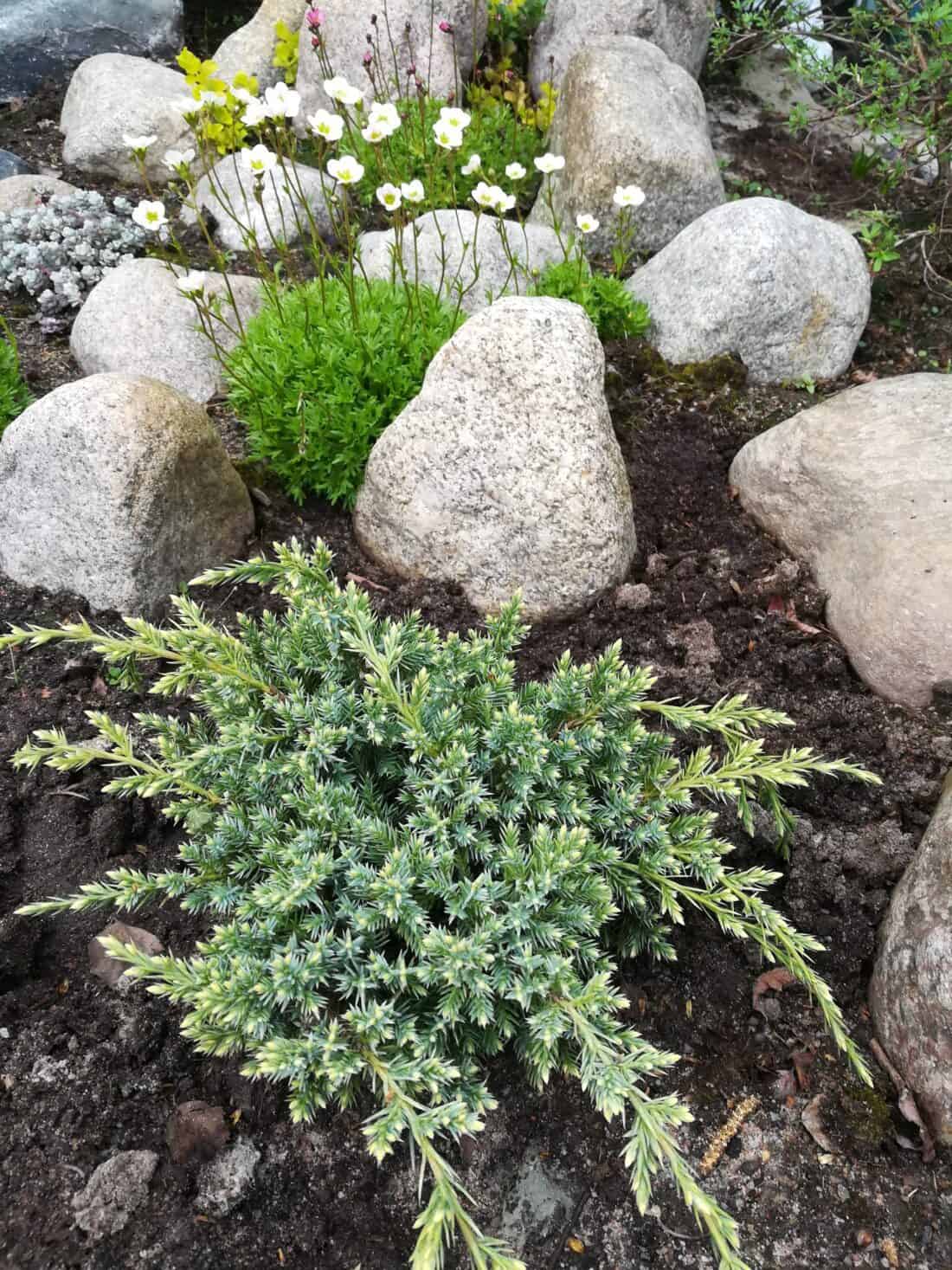
6. Parson’s Juniper
- Latin Name: Juniperus davurica ‘Parsonii’. It also goes by Juniperus squamata expansa ‘Parsonii’
- Hardiness Zones: 4-9
- Container Growing: Adaptable to various soils but must be well-drained. Full sun is preferable. Drought tolerant once established, making it low maintenance in containers.
This juniper has cones (all the more interesting!) and tends to be low-growing and mounded. It is often used as an evergreen ground cover when planted in the ground, and in a container, it will spread horizontally over the edges of the pot.
Parson’s juniper (Juniperus davurica ‘parsonii’) is silvery-green in color and will grow quickly (especially compared to other evergreen plants on this list). This juniper is particularly tolerant of salt spray (if that is something that impacts your garden) and is also not something that deer will eat.
Parson’s juniper, along with the other juniper varieties on this list, tend to be good candidates for bonsai pruning to make your container garden planting even more shapely and interesting.
I particularly like this juniper because it is soft and tends to be less irritating on my skin when I touch it.
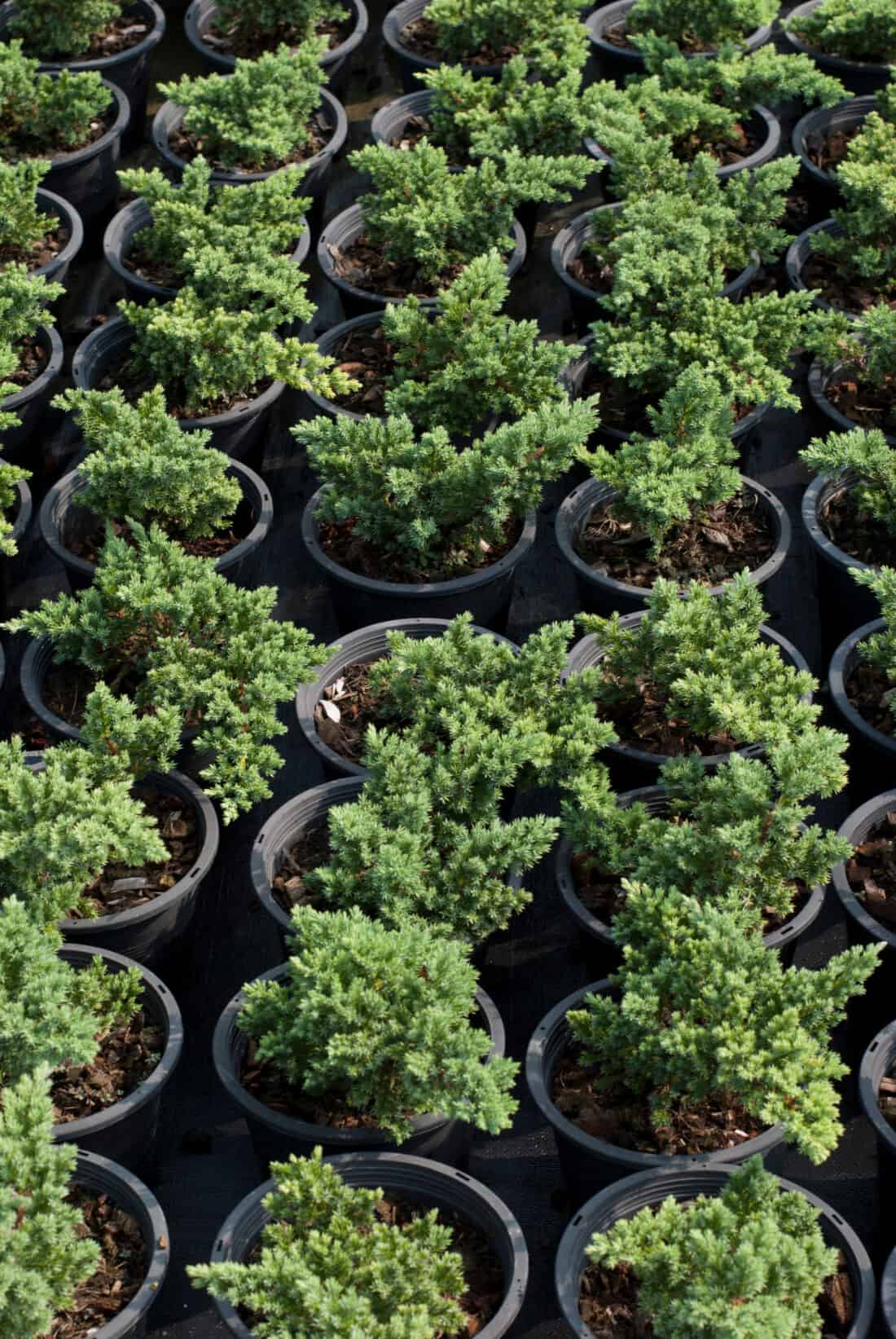
7. Green Mound Juniper
- Latin Name: Juniperus procumbens ‘Nana’
- Hardiness Zones: 4-9
- Container Growing: Needs well-draining soil and full sun. Tolerates dry conditions. Its compact and spreading habit makes it attractive in containers, especially for bonsai.
This is the lowest growing and most matted of the junipers on this list (it will only get about 8″ tall). It is very popular and easy to find.
I’d consider planting this evergreen plant in a taller pot or one that is elevated or hanging – the branches will reach over the sides and go down (rather than up), and by giving it some height, you will highlight this plant’s unique characteristic.

8. Blue Star Juniper
- Latin Name: Juniperus squamata ‘Blue Star’
- Hardiness Zones: 4-8
- Container Growing: Prefers full sun and well-drained soil. Tolerant of dry conditions once established. Its slow growth and striking blue foliage make it a great container specimen.
In a container garden, Blue Star Juniper and Green Mound Juniper will serve much the same purpose. They will grow low out and wide (rather than up), creating a dense mat of foliage. The primary difference is color – Silver-Blue or Green? Both are great.
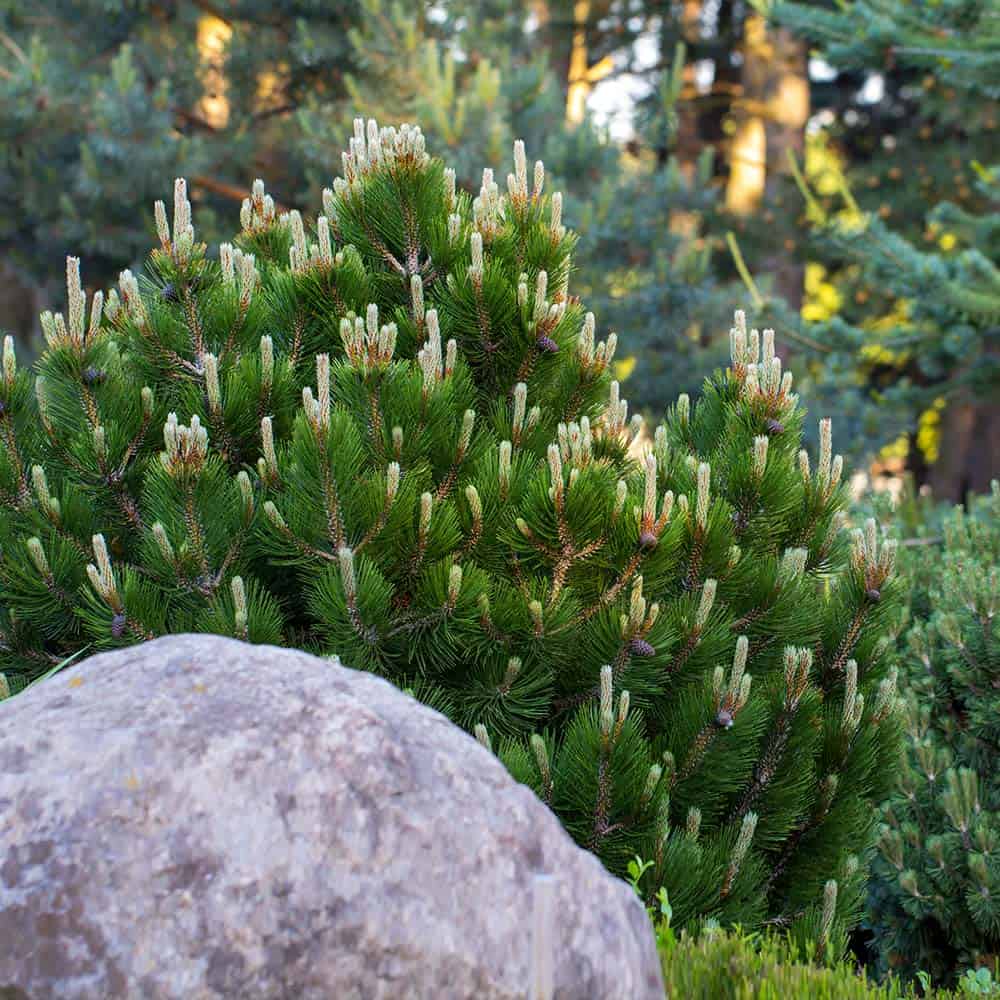
9. Dwarf Mugo Pine
- Latin Name: Pinus mugo ‘Mops’
- Hardiness Zones: 2-8
- Container Growing: Requires well-draining soil and full sun. Water regularly, but avoid overwatering. Its compact size and resilience make it a popular choice for containers.
Mugo Pine is one of the hardiest evergreens on this list – making it even easier to grow in containers (remember – container-grown plants require you to adjust your hardiness expectation down at least one zone. Above-ground root systems – even in a pot- take a toll on potted plants. The roots are not adapted to the additional cold of being above ground, so you need to adjust your reduce your hardiness expectations).
This is a very attractive plant – I am partial to its ‘candles’ (I’m not sure if that is what they are officially called – but just look at them!) – the new growth creates pretty white outgrowths that really add lots of interest to the look of this evergreen shrub.

10. Cryptomeria Globosa Nana (Japanese cedar)
- Latin Name: Cryptomeria japonica ‘Globosa Nana’
- Hardiness Zones: 5-9
- Container Growing: Prefers moist, well-drained soil and partial to full sun. It’s important to protect from harsh winter winds. Suitable for containers due to their slow growth and compact form.
The best feature of Cryptomeria is how much you want to touch it. I can’t help myself. Tough, Touch, Touch.
These shrubs grow slower (maybe only 6 inches per year), and their stems are soft and supple. If they are in the ground, they can eventually reach 4-6 ft in height and width, but they will be restrained by limited room for root growth in a container.
You should give them ample space and inground space if you want them to get bigger.
The fresh green color is the other reason to grow this evergreen potted plant. Unlike any other on this list – if you love the green of spring (but all year round), this is the choice.
Each of these plants can thrive in containers if their specific needs are met, particularly in terms of soil type, watering, sun exposure, and protection from extreme weather. Regular pruning and repotting (as they grow) can also help maintain their health and appearance.
+comments+